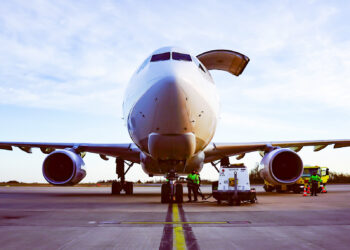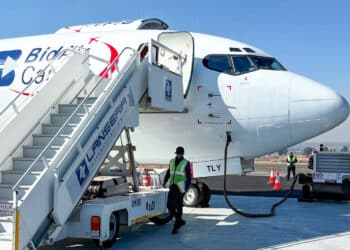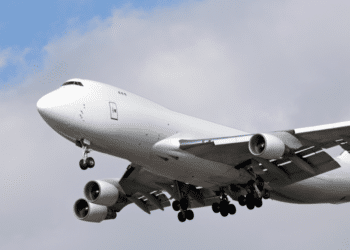A September to forget

Enough of the world’s major cargo carriers and airports have reported their September cargo results to lead us to be fairly pessimistic about the month. It will be another two weeks before worldwide data are available from IATA and WorldACD, but we expect both organizations to report flat or negative growth in demand for September.
One reason for this is that almost all of the full-year 2014 growth in demand came in the last half of the year, so comparisons are tougher. And, as we have seen since the one-time effects of the US west coast port slowdown and automobile recall began to wane in March, underlying airfreight demand growth was minimal even in the first half of this year when comparisons were soft.
Looking ahead, even with a relatively good peak season we are unlikely to see much of a jump in y-o-y growth in the coming months, again due to the tough comparison offered by last year’s strong peak.
Now for the September details…
Asia Pacific
Cathay Pacific Airways reported September cargo traffic up 3.4% y-o-y to 868 million RTKs. This is one of Cathay’s smaller year-over-year increases since it began a trend of mostly double-digit growth in March 2014 (falling to single digits in March 2015). For the first nine months of 2015, Cathay’s cargo traffic was up 7.4% to 6.85 billion RTKs. Commenting on the September results, Cathay Pacific General Manager Cargo Sales & Marketing Mark Sutch said: “As expected, demand in the cargo markets began to climb as we moved into September, though it was more of a trickle than a surge. Our business received a boost from the movement of new consumer IT products out of the key manufacturing areas of Western China, but overall the momentum in the markets remained flat. Our main focus was on transpacific routes to the Americas though demand to and from India continued to remain buoyant. We still expect to see a traditional winter peak and will be operating a full freighter schedule from mid-October through November”
Hong Kong International Airport reported cargo volume up 1.1% y-o-y in September to 368,000 tonnes, a return to year-over-year growth after six months of declines. Export volume was up 2.0% to 232,000 tonnes, enough to compensate for a 0.4% decline in import volume. After beginning the year on a positive note – combined January/February volume was up 7.2% – HKIA saw year-over-year declines in the next six month, and September’s slight increase brings HKIA’s handle for the first three quarters of 2015 to 3.19 million tonnes, up only slightly (0.3%) over 2014. Commenting on the September results, HKIA said that among the key trading regions, traffic to/from North America and Australasia increased most significantly.
Beijing-based Air China reported September cargo traffic up 1.3% y-o-y to 551 million RTKs. This is the first time in over a year that the carrier has reported less than double-digit demand growth – and in most of that time the y-o-y increases were more than 20%. The slight September growth came as a 7.3% gain in domestic traffic to 143 million RTKs was just enough to overcome a 0.3% decline in international traffic to 399 million RTKs.Air China’s cargo traffic for the first nine months of 2015 was up 20.2% to 4.84 billion RTKs.
Guangzhou-based China Southern Airlines reported September cargo traffic up 10.2% y-o-y, to 516 million RTKs. International traffic was up 15.4% to 352 million RTKs, while domestic traffic was almost flat (up 0.4%) at 162 million RTKs. For the three quarters of 2015, China Southern’s cargo traffic was up 10.9% to 4.06 billion RTKs.
Shanghai-based China Eastern Airlines reported September cargo traffic up 1.3% y-o-y to 409 million RTKs, a considerable improvement over the 11% declines the carrier reported in July and August, and just the latest in a series of ups and downs that has left the carrier’s cargo traffic for the first nine months of 2015 up 0.9% to 3.57 billion RTKs. China Eastern’s international cargo traffic in September was down 0.8% to 307 million RTKs, while domestic traffic was up 8.3% to 91 million RTKs.
Taiwan-based EVA Air reported September cargo traffic down 12.3% y-o-y to 286 million RTKs. For the nine months of 2015 through September, EVA’s cargo traffic was down 8.3% to 2.75 billion RTKs.
Taiwan-based China Airlines (CAL) reported September cargo traffic down 1.2% y-o-y to 411 million RTKs. For 2015 through September, CAL’s cargo traffic was up 2.8% to 4.05 billion RTKs.
Shanghai Pudong International Airport Cargo Terminals Co. Ltd (Pactl, the biggest cargo handler at PVG): reported its September handle up 1.3% y-o-y to 136,000 tonnes. This is a much smaller increase than the double-digit gains Pactl was reporting earlier this year, gains which Cargo Facts believes were the result of Pactl increasing its share of the cargo handled at PVG, rather than indicative of more cargo moving through PVG. With comparisons now more like-for-like, growth in Pactl’s handle is much more in line with the airport as a whole. International volume for the month was up 1.6% to 127,000 tonnes, while the much smaller domestic volume fell 3.6% to 9,000 tonnes. For the first nine months of 2015, Pactl’s handle was up 8.5% to 1.17 million tonnes.
Europe & Middle East
Lufthansa Cargo reported September traffic down 4.6% y-o-y to 692 million RTKs. For the Lufthansa Group as a whole, September cargo traffic was down 5.2% to 816 million RTKs. Traffic on the Asia-Pacific trade lane was down slightly (0.7%) y-o-y, but the total was dragged down by a 7.1% drop in trans-Atlantic traffic, and a 17.2% drop in traffic to/from the Middle East and Africa. The September decline is similar to what the carrier reported in August, and reflects the gradual acceleration of a trend of year-over-year declines that began 18 months ago. It leaves Lufthansa Cargo’s traffic for the first nine months of 2015 down 1.8% from the same period last year to 6.23 billion RTKs. For the Lufthansa Group, cargo traffic through the first three quarters was down 2.0% to 7.40 billion RTKs.
Air France-KLM continues to report dismal cargo results. It may not seem so at first glance, because cargo traffic was up 8.2% y-o-y in September to 746 million RTKs – but adjusted for the impact of the strike in September 2014, the carrier said cargo traffic was down 10.8%. For the year through September, AF-KLM’s cargo traffic was down 8.0% to 6.711 billion RTKs.
International Airlines Group reported September cargo traffic down 6.0% y-o-y to 412 million RTKs (adjusted for the recent acquisition of Aer Lingus). Subsidiary carrier Iberia saw cargo traffic up 3.7% to 84 million RTKs, while IAG’s larger British Airways subsidiary to reported traffic down 8.4% to 328 million RTKs. For the first nine months of 2015, IAG Cargo’s traffic was down 4.1% to 3.88 billion RTKs.
Turkish Airlines reported September cargo volume up 2.1% y-o-y to 60,000 tonnes. This is a considerable decline from the double-digit gains Turkish has reported in the last four months, and marks a return to the low-single-digit gains of the first four months of this year. For the first three-quarters of 2015 Turkish’s cargo volume was up 9.0% to 488,000 tonnes.
Frankfurt Airport (FRA) reported its September cargo handle down 4.7% y-o-y to 170,000 tonnes. For 2015 through September, FRA’s handle was down 2.4% to 1.56 million tonnes.
London’s Heathrow Airport (LHR) reported its September handle down 4.4% y-o-y to 119,000 tonnes, continuing its year-long pattern of small gains and losses. For the first nine months of 2015, LHR’s handle was almost flat with last year – up 0.2% to 1.10 million tonnes.
Amsterdam’s Schiphol Airport reported its September cargo handle up 1.1% y-o-y to 138,000 tonnes. For the first three quarters of 2015, AMS’ handle was down 1.4% to 1.19 million tonnes.
Americas
Cargo traffic continued to fall steeply at Chile-headquartered LATAM Airlines Group, which reported September traffic down 12.5% y-o-y to 306 million RTKs. The company said cargo traffic continued to be “weak during the month of September, particularly in the Brazil domestic and international markets.” For the first nine months of 2015, LATAM’s cargo traffic was down 11.6% to 2.80 billion RTKs.
United Airlines reported September cargo traffic up 1.9% to 309 million RTKs, continuing a period of growth growth that began in late 2013. For the year through September, United’s cargo traffic was up 6.7% to 2.83 billion RTKs.
American Airlines reported September cargo traffic up 3.1% to 275 million RTKs. For the first nine months of 2015, American’s cargo traffic was almost flat (down 0.3%) with 2014 at 2.51 billion RTKs.
Delta Air Lines reported September cargo traffic down 12.4% y-o-y to 266 million RTKs. For the year through September, Delta’s cargo traffic was down 5.9% to 2.42 billion RTKs.
Get more air cargo insights at the 2015 Cargo Facts Symposium, Oct. 26-28 in Miami. Click here for details.




